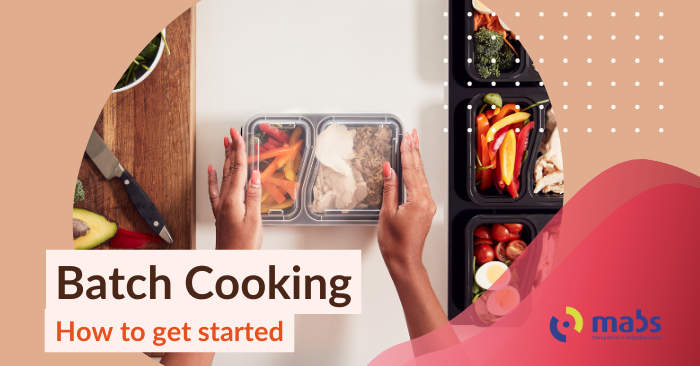Batch Cooking – How to get started

Have you ever heard of batch cooking?
Did you know that it can help you save? Save on time, save on stress, and, more importantly, help you save money.
The average Irish household will throw out approximately €700 worth of food a year. Batch cooking can help to reduce the amount we throw away and free up some money for your household budget.
Batch cooking is a term you will be familiar with if you’ve learned about budgeting or how to save on your grocery shopping. We reference it often, as well as meal planning, as they go hand in hand. But what does it mean, and how do you do it?
In this blog, we will be exploring this topic and sharing some tips to help you get started.
So, what is batch cooking?
Batch cooking simply means cooking more than one meal at a time or adding extra portions to the pot for use later. These extra meals or portions can be frozen to use at a later date. Why is this helpful? Because it helps to reduce waste by reusing leftovers.
Some people will factor in time during the week to make extra meals. This is to have meals ready to go in the fridge or the freezer anytime you want. These can then be used as quick meals on busier days.
Others may just make a bigger pot on the day. Batch cooking is very flexible, and that’s the point! You can also prepare vegetables or cook some extra sides, such as potatoes or rice, to save you time on preparation.
It can take some know-how and a little bit of planning. Once you get the hang of it, you can save on both your groceries and energy bills!
Why would I batch cook?
If your household is busy throughout the week, you rely on takeaways, or you have picky eaters, it can be very convenient to have meals ready that just need to be reheated/thrown in the oven. When you have picky eaters in the house, you might find you’re cooking one or two different meals every mealtime. Having one of those meals prepared beforehand can be a lifesaver.
What are some common batch-cooking recipes?
Safefood has a great library of recipes specifically for batch cooking. Some you’ll know, and others might be new to you. Soup is the perfect example of batch cooking. When using up vegetables, you might end up with a lot more than you expected, perfect for freezing or saving in the fridge for lunchtime. Pasta is another great example of something you can prepare ahead of time. Think lasagna and pasta salads for lunches! Pasta freezes and reheats really well, so it’s a good all-rounder for batch cooking.
Start with what you know
You know your household best and what everyone will and won’t eat. So, start with family favourites you know will take the pressure off. Once you’ve got the hang of making additional portions or components, you can explore new recipes. Soon, you’ll have a handful of recipes you can alternate between, and you can base these recipes on what offers are in the grocery shop and save some money.
Food Safety First
If you decide to batch cook, ensure you practice safe food techniques. Food safety is important, not only from a health and hygiene perspective but if you don’t prepare or store your food correctly, you might have to throw it out, costing you money as well.
Here are a few tips, but be sure to do your own research relevant to the recipe you’re cooking. For instance, raw meat has to be treated differently from cooked vegetables.
- Safefood has a lot of helpful tips such as defrosting food, food preparation, and storing food safely, so bookmark their website so it’s easier to find.
- Always use up refrigerated leftovers within 3 days of cooking.
- Be sure to label leftovers with the contents and the date it was cooked, and when you’re taking them out of the freezer to defrost, use them in the order they were cooked.
What’s Next?
Now that you’ve got your head around what batch cooking is and how to get started, why not give it a go? Let us know how you get on by tagging us in your batch-cooked creation on the MABS Instagram using the hashtag #MABS.
Contact Us
If you have a query for one of our advisers or are struggling with your budget, you can call the MABS National Helpline on 0818 07 2000 Monday to Friday, from 9 am to 8 pm or find the contact details for your local office.
Note: We welcome references to and use of the content in this blog. However, please reference MABS and link said content if you choose to do so.




Facebook
twitter
Instagram